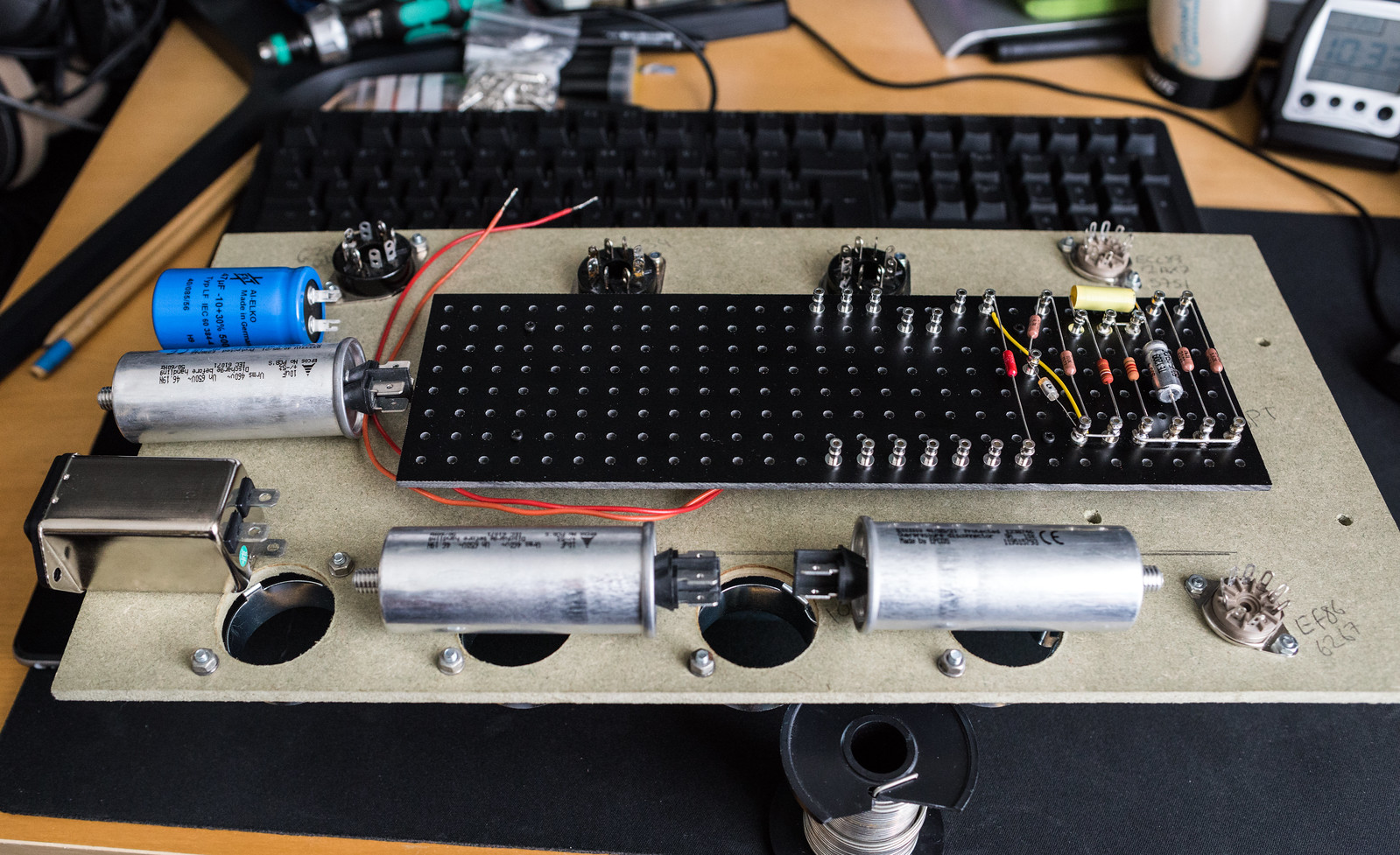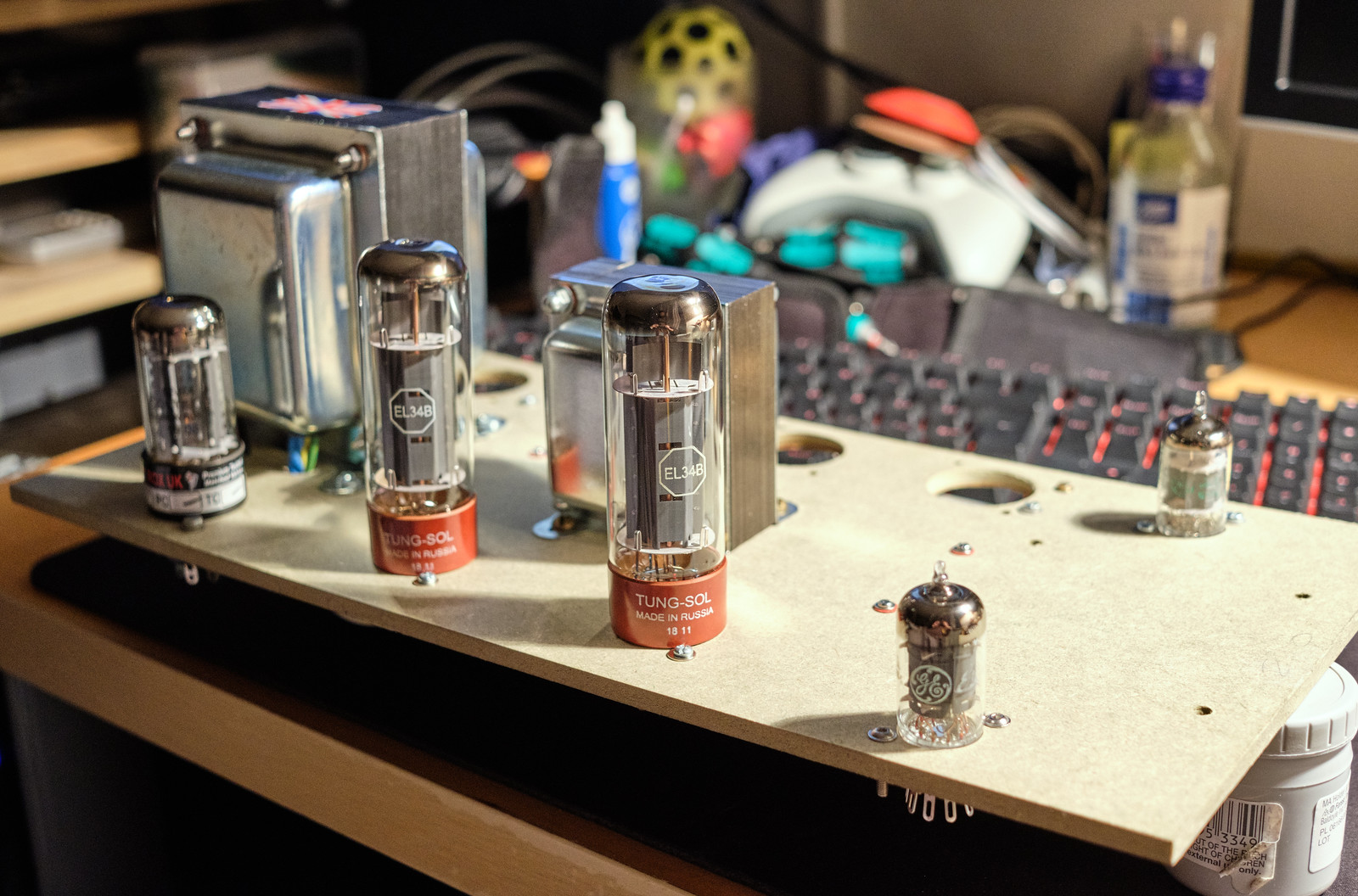Something a little different from the usual pc builds. I've been trying to get both the time and effort to scratch build my own power amplifier for nearly a decade. Originally, I had planned on building a clone of a Quad 606, but owning and tinkering with 12 different solid state amplifiers, it just didn't really "spark" my enthusiasm enough so it got put on the back burner in 2012. Late last year a friend in work asked to borrow a scope probe as he was repairing his vintage valve amplifiers. (Leak TL12's) Which brought up the idea I'd never considered, why not scratch build a valve amp instead?
The plus points from my perspective were:
Disadvantages:
Having spent some time looking around for something to work with, I came across a book by the British valve manufacturer Mullard called, Circuits for audio amplifiers. In said book were a few different designs one of which piqued my interest, the 5-20, so named because it uses 5 valves and would happily produce 20W. It might not sound like much to some, but 20W is more than sufficient to shake the windows, rattle the furniture and severely annoy my neighbours. The topology was used in many successful commercial designs that are very well regarded. (Dynaco ST70, Harmon Kardon Citation V, Eico HF60 & Beam Echo Avantic DL7-35 to name a few)
Schematic for said build.

I'll be building them semi faithfully to the original design with a few tweaks here and there to improve reliability and safety along with adjusting the chassis to suit my requirements.
The plus points from my perspective were:
- They look and sound great according to the hifi world (although I'll admit I've never heard one, which inspires my curiosity)
- Point to point wiring with no printed circuit boards means very easy to modify, if a little more challenging to build
- Fewer parts, so less to go wrong, should make fault finder much easier
- Valves are more resilient to problems in the circuit and are less likely to catastrophically fail unlike transistors and mosfets
- Valves are still in production so no issues buying parts (unlike certain older mosfets/transistors)
Disadvantages:
- Transformers and chokes used can cost a small fortune
- Valves aren't dirt cheap like transistors
- Valves wear out with use
- Valves can be susceptible to external noise and can be microphonic
- The high voltages used require considerable care to avoid an early departure from this world
Having spent some time looking around for something to work with, I came across a book by the British valve manufacturer Mullard called, Circuits for audio amplifiers. In said book were a few different designs one of which piqued my interest, the 5-20, so named because it uses 5 valves and would happily produce 20W. It might not sound like much to some, but 20W is more than sufficient to shake the windows, rattle the furniture and severely annoy my neighbours. The topology was used in many successful commercial designs that are very well regarded. (Dynaco ST70, Harmon Kardon Citation V, Eico HF60 & Beam Echo Avantic DL7-35 to name a few)
Schematic for said build.

I'll be building them semi faithfully to the original design with a few tweaks here and there to improve reliability and safety along with adjusting the chassis to suit my requirements.
Last edited:







































 I Think These may well be too narrow as it's seeming a bit snug on the inside.
I Think These may well be too narrow as it's seeming a bit snug on the inside.
